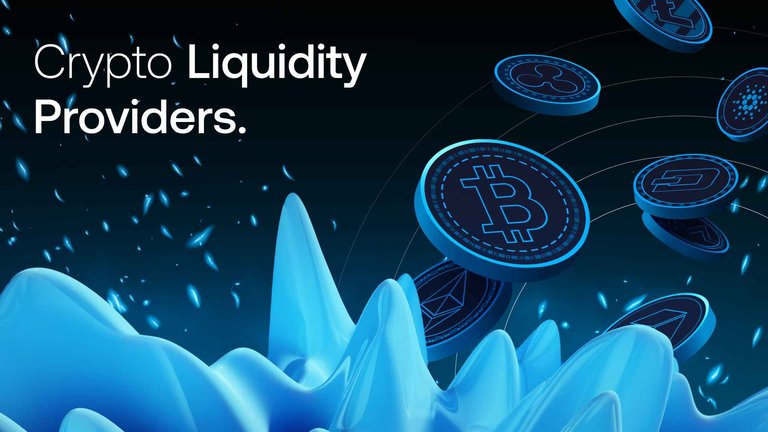Use And Importance Of Liquidity Provider (LP) Tokens In DeFi
DEX are the blockchain-based algorithms offering an automated, intermediaries-free trading of digital assets among users. The biggest Ethereum DEX by volume, Uniswap has more than 50% of the market share and Total Value Locked amounting to 5.95bn USD. In contrast to order books used by centralized exchanges, DEXs depend on Liquidity pool (LP) for liquidity. They are composed of pooled crypto assets from investors making it possible for token holders at their pleasure to buy, trade, borrow, lend or even swap other tokens. Assets are sourced from liquidity pools, which then clear buy and sell orders on DEXs. They make it possible for one type of asset to be easily turned into another without significantly changing its value.
Understanding Liquidity Provider Tokens
The LP tokens refer to Liquidity Provider Tokens which are the tokens generated for the liquidity participants in the Decentralized Exchange run by Automatic Market Maker protocol. As it facilitates transaction among different types of currencies, it works as an incentive mechanism. However, decentralized exchanges depend on liquidity providers for the functioning of cryptocurrency trading markets. Liquidity providers receive LP tokens when they deposit their assets into the liquidity pool. The LP token represents the amount of fees attributed to each person in the liquidity pool proportionally. These act as invoices which the liquidity providers can cash in to regain his initial investment plus the interest accumulated.
In addition to releasing the available liquidity, LP tokens have other uses too. It enables liquidity providers to obtain crypto loans, signifies holding of staked liquidity, and makes potential yield farming resulting in compounded interest. Interest is earned on the original investment deposited.
Understanding Liquidity Providers
These tokens are often found in small market caps with low liquidity and restricted access that can result to difficulty in locating a counterpart to match an order for DeFi. It enables buying and selling of an asset in a free market by preventing price change when transacting. There is no shortage of ready buyer and vendor for highly liquid assets as transactions in such asset can be done fast with minimal costs. In contrast, low-liquidity assets have fewer buyers or sellers, making this implementation of trades tough that it may eventually lead to price high transaction costs.
Liquidity providers employ the practice of liquidity mining or market making to stake their currencies onto decentralized exchanges and earn transaction fees. The transaction fee is typically quoted or expressed as an interest rate that changes with the availability of liquidity among other factors like the size of transaction completed. Two tokens are put in their respective pockets by the liquidity providers. They can then deposit their tokens once or several times, after which they may charge little fees for other users trading with these tokens. In return for providing assets like Ether (ETH), liquidity providers earn LP tokens corresponding to their pool share, which could be redeemed in case of any transaction fees. The supply side of tokens in the LP pool was always at the disposal of providers, making them decide on time and mode of withdrawing their stake.
Understanding Automated Market Makers (AMM)
Most DEXs operate through automated market makers (AMM). AMM is a protocol or trading mechanism which does without intermediaries in order-books. It is autonomous and makes use of a smart contract system for asset pricing. Each asset pairs have their separate individual liquidity pools, which any person can supply with liquidity. Liquidity pools have established mathematical formulas that balance the respective assets, thereby ensuring a stable valuation. The asset’s price is determined by a 50/50 split that results from rebalancing each liquidity pool.
Understanding How LP Tokens Works
LPs are awarded Liquidity Provider Tokens (LP tokens) for providing an ample amount of liquidity on a liquidity mining protocol. It refers to the percentage an investor possesses in the pool. On the other hand, LPs hold sole authority over their tokens for instance, redeeming of the crypto assets through the use of LP tokens. The LP tokens operate as a balance that gives an investor assurance of the assets they had deposited into the pool. It becomes possible through smart contract to transfer ownership of LP tokens according with the terms of the liquidity pool. Loan tokens can likewise serve as collateral.
Liquidity Provider tokens solve the problem of locked cryptocurrency liquidity in DeFi. That is, before the LP tokens, some crypto assets had been tied in various ways (for instance for voting systems or governance) and thus were not accessible. That caused reduced liquidity and action among cryptocurrencies. The use of LP tokens enables large pools of liquidity for user-contributed assets, enhanced market liquidity, and financial incentives to LPs as return for their contribution through the issuance of LPP tokens.
To use one’s crypto funds for LP tokens means that crypto users decide to become liquidity providers by sending their crypto assets to a chosen liquidity pool so as to receive these tokens in return. For every 10% of the pool’s liquidity that a user contributes; he/she gets 10% of the pool’s LP tokens from this pool. They will be added to the liquidity wallet and can easily be pulled out along with any interests that accumulate.
Similarly, it should also be noted that just like any other crypto assets, LP tokens must be stored safely since if they were lost, shareholders would lose their portion of the pool. But LP tokens can be transfer from one DApps to other DApps except when its removed from pool it lose claim from liquidity pool share.
In conclusion
LP tokens play important roles in DeFi. Aside from helping in determining how much a person gets from a liquidity pool, they may also be employed in yield farming, as collateral, and for transfer value. For those seeking to earn passive income from their crypto assets, LP tokens present a very tempting opportunity but also carry a potential downside. Generally, the DeFi sphere is always dynamic; therefore, new ways or use cases for LP tokens keep emerging over time. You wouldn’t want to diversify only when it’s already too late. You will know how to make the highest return from your LP tokens depending on your risk appetite.



You broke all of this into a lame man's English, I can now tell people what the LP means (Liquidity Provider Token) how to accumulate them and why they should be stored safely. No one wants to encounter loss at any point, safety and security should be of importance to any crypto assets holder.
Thank you for enlightening me.
I’m really glad you found my piece worthy, thank you for the kind word.
https://inleo.io/threads/wealthwess/re-wealthwess-2tu6u2scc
The rewards earned on this comment will go directly to the people ( wealthwess ) sharing the post on LeoThreads,LikeTu,dBuzz.